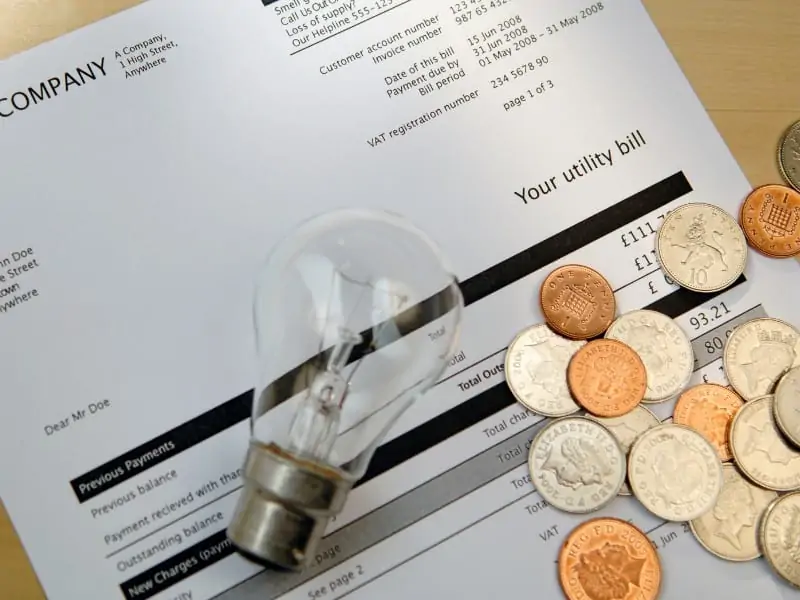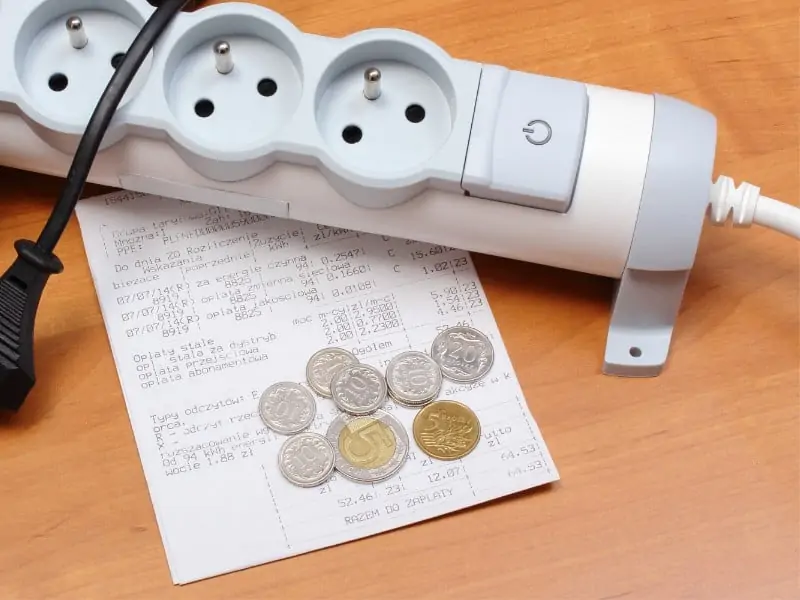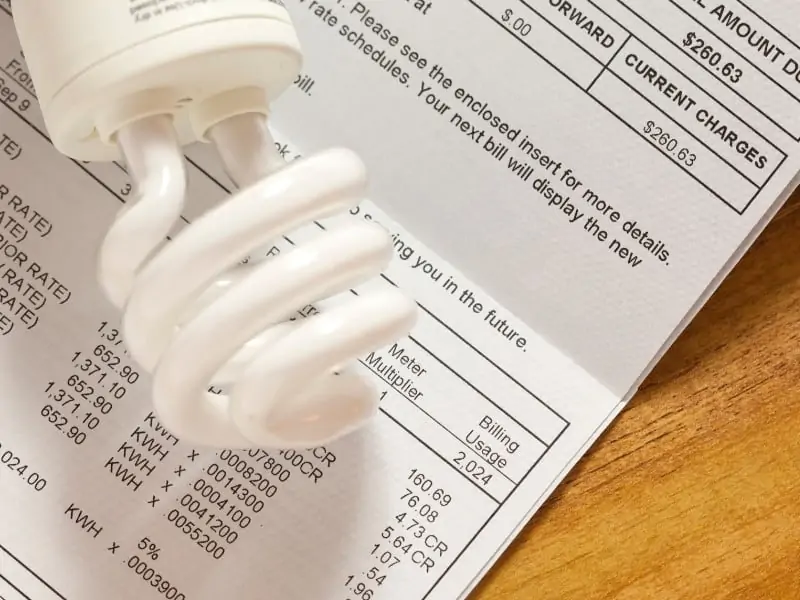* We sometimes use affiliate links, so we may receive a commission, at no cost to you, if you make a purchase through a link. Check our disclosure for more info.

I'm Steph, mum of three! 👋
Here, I share practical insights on making (and saving!) money. With a knack for budgeting and a passion for financial freedom, I've picked up lots of tips & tricks along the way. And I can't wait to share them with you here!
Wondering how to lower your Electricity bill? We’ve got some tips to help you out :)
What’s the first thing that springs to mind when you think about saving energy? For me, being told as a child every 5 minutes (or what seemed like!) to turn my bedroom light off when I left the room, is my ever lasting first thought when I think about saving power.
So, is turning off a few lights enough? Will that make a dramatic difference to my electric bill? As the Mum myself now, with three kids and 5 of us living in the house, I became interested a while ago in looking at ways not just to shave a few pennies off the monthly direct debit, but ways to consistently bring our bill down, and keep it down.

How To Lower Your Electricity Bill
I know that if the changes I can make don’t involve me saying the same things over and over again to the kids, whilst they don’t listen and I bore us all, then all the better :) And as it turns out, there’s a few ways we can make real savings, whilst not really noticing. And that’s a win!
One of the first things we should all be doing is checking that the tariff we’re on is the lowest it can be, and you can check for the cheapest deal here.
Related Posts
- How to make your money go further
- Surprising ways to cut household bills
- The best UK cash back sites

What Makes My Electric Bill So High?
One thing that’s changed since I was a kid being moaned at to save electricity, is that many things we have in the house these days and use often are plugged into the mains and stay on standby, just waiting for a command for us. And of course to be on ‘standby’ they have to be powered, and this is a problem.
Another big power user although not all that common in the UK, are air conditioner units which are power hungry for the most part, and next to this is heating, if you use electricity and not gas of course.
Tumble dryers, dishwashers and slightly further down the list comes lighting. If you’re buying a new appliance, always go for the one with the best energy rating. These start at A and go down to G. The older A+++ etc… aren’t in use anymore, so it’s all a bit clearer not with A being the most energy efficient, and G being the least and you can read more about the UK energy labels here.

What Are 3 Ways To Reduce Your Electricity Bill?
There’s lots of little ways to save money on your energy bill and they all add up. However, rather than stressing about every little thing, there’s a few things we can do that have a big impact.
Vampire Loads
Ever heard of Vampire loads? No, I hadn’t either! As it turns out, a vampire load is when power is drained from appliances when they’re in standby mode. Often, these are appliances that have a remote control, but not exclusively. I assume the term Vampire load comes from the poser being sucked out of the supply, like a vampire sucks blood….you get it, right?!
How to deal with a vampire load? With a Smart Power Strip! These look a lot like the traditional power strips lots of us have around the house, but if you get a Smart one, it’s capable of detecting when something’s in standby mode and actually cuts the power to it. Clever, huh??
As I write this looking at the TV set up we have in the lounge, there’s the TV, the Sky box, and two games consoles. They’re all used at some point, some more than others, but all have the ability to be in standby mode. The leads behind this set up are many, but we got one of these smart power strips a while ago, and it all works exactly as the old one did, but saves on power. I don’t need to be nagging anyone to turn anything off, I don’t even give it a second thought!
You can find Smart power strips in lots of high street shops, or you can have a look at this smart power strip on Amazon.
If you want to get fancy, have a look at these Meross smart plugs. They connect up to your phone and allow you to turn off (or on) your appliances remotely, so if like me you have kids who forget to turn off appliances this might be something you want to look at.

Use LED Light Bulbs
LED bulbs are the biggest energy savers and while they’re initially a little more to buy than other bulbs, they make their money back in savings. An 8 or 9 watt LED gives the same light as a 60 watt incandescent bulb, so it’s easy to see the difference.
The lifespan of up to 50,000 hours for an LED bulb would give the average user about 10 years of light, so the price difference is largely returned through savings. I would say however, we have LED bulbs in nearly all out light fittings these days, and I’d recommend getting good quality bulbs to start with, as we’ve had some LEDs that most certainly didn’t reach their 10 year life span :)
Air Dry Your Clothes
I really like my tumble dryer. Waaaay to much really, and when it breaks, as it has on occasion, it sends me into something of a tail spin. However, whilst I’ve not no immediate plans to get rid of my dryer I’m aware they’re one of the more power hungry appliance we have and so I have made a huge effort to only use it when absolutely necessary.
If like me, you’re someone who relies on your dryer to avoid having wet clothes hanging around the house, there’s some things you can do to make it so you’re using it less.
During the Summer, I use a line in the garden just like my Mum used to, and for lots of the washing, this is fine. Bedding does well drying outside, as do lots of cotton clothes.
I cannot give up those lovely soft towels, and so I’ve come to a compromise. I hang the towels outside until they’re almost dry and then I finish them off in the dryer. Same with denim which can be a little crunchy when air dried.
But…what to do in the Winter when wet clothes would either freeze outside or simply stay wet for days on end? There’s a few things you can do. Since we have the radiators on during the colder weather, a couple of years ago I invested in several of these radiators clothes dryers. I use the same principles as I do with Summer outside drying, and when the clothes are nearly dry, I give them a few minutes in the dryer.
I really like these radiator dryers as the clothes dry quite fast, and because there’s a heat source, you don’t get the damp clothes smell you can do sometimes when there’s a lot of wet clothes in the house.
The last tumble dryer tip I have is these dryer balls. I originally used plastic dryer balls and then I found these natural wool dryer balls. And they’re brilliant! They serve two purposes, the first being that they reduce the drying time and they do this by creating air pockets in the clothes in the dryer as the balls fly around the drum. But that’s not all… they also act as fabric softeners, so you don’t need to be buying fabric softener.
